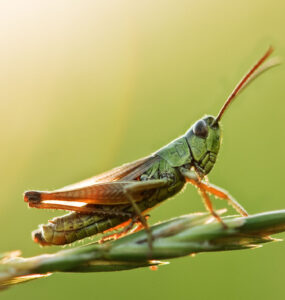If you’ve never seen a dew worm, do I have a mental picture to paint for you. Imagine the cute little red wrigglers in your garden, only reaching nightmarish proportions. Dew worms are worms the size of snakes, with their greasy, gummy bodies ranging from 10-30 cm long.
While worms are excellent to have in the yard for their ability to aerate the soil, dew worms (or night-crawlers), are far too much of a good thing. Active at night and early morning, when the lawn is wet (hence the name), they can churn a healthy lawn into a chaotic jumble of castings mounds and deep tunnels.
The Damage They Do
Dew worms thrive in old lawns, especially those with decades of accumulated thatch. Besides age, dew worms love shaded, sheltered, well watered lawns.
When you walk across your lawn in bare feet, does the ground under the grass feel like a miniature Western Front, complete with shell-holes and tossed mounds of earth? If so, you’ve probably got dew worms.
The mounds, which can be irritating both to walk on and mow over, are castings pushed up from the worms’ burrowing. While the worms won’t kill your lawn, severe infestations will make it almost impossible to walk and play on; they will effectively evict you from your yard.
Dealing with Them
Underneath the casting mounds, dew worms’ extensive tunnels can dip several meters below the surface. This inaccessibility, combined with their creepy size, makes them very hard to kill.
If you won’t be satisfied until every one of them is dead, you have a frustrating road ahead. My recommendation is to focus on controlling their numbers, and the damage they do, by keeping them underground. They’re also highly mobile and tend to populate blocks of houses at a time, often in older neighborhoods, so if you use chemicals to eliminate them, you are really only created a vacuum and encouraging others to move in. If you use cultural, preventative controls, you will make your yard less appealing on the long run.
Aerate your lawn in the spring and fall, and rake it out well. This will reduce the thatch and make the surface less appealing to worms overall. There are many companies offering the service or you can simply rent an aerator.
Don’t water your lawn in the evening, and only water it when needed. In a normal rainfall year, a healthy lawn actually needs little or no supplemental watering. If your lawn is patchy, top dress with fresh grass seed or, if it’s very unhealthy, consider tearing it up and starting again with fresh turf.
As with all slimy bellied creatures, dew worms hate crawling over abrasive surfaces (which is why they love wet grass at night). Sprinkle a generous layer of sharp sand over the affected lawn. While nonlethal, it will make them think twice about venturing to the surface.
If you insist on using chemicals, the active ingredient carbaryl is approved for use against dew worms. Most products containing carbaryl have, wisely, been banned, and the last product with it is called Sevin. Sevin will reduce your dew worm numbers, but even it won’t eliminate them. It is definitely not safe for animals, children, or pregnant women.
Please regard using Sevin as an absolute last resort (I don’t recommend it in any resort). You will effectively wipe out the entire ecosystem of beneficial bugs, fungus, and bacteria that have built up in your yard. If you use Sevin, expect a host of other pests to spring up, like aphids, because you’ve just nuked all their predators.
















